Evaluators discuss Mets' internal options on offense for 2024 MLB season -- and a potential Shohei Ohtani pursuit
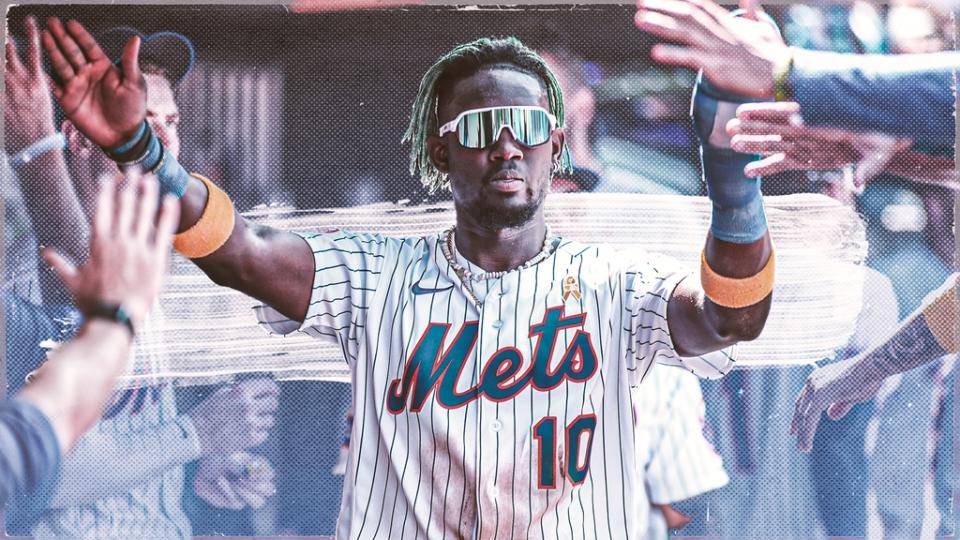
Pitching aside, the Mets need to add a star-level hitter if they want to contend for a championship in 2024.
That’s not just my opinion but the consensus of five talent evaluators I spoke with over the last week regarding the Mets' offensive outlook for next season.
"They’ve got some good pieces, but they’ve got way too much inconsistency in their lineup," said one National League scout. "If they get the right guy, he could be the centerpiece they need to make them much more productive."
The problem is there are only two hitters fitting that description who are expected to be available as free agents this offseason: Shohei Ohtani and Cody Bellinger.
Even if Ohtani opts for Tommy John surgery now that his season is done, he could be ready as a DH fairly early next season, judging by Bryce Harper’s timeline: the Phillies' superstar had the surgery Nov. 23 last year and was in the lineup as DH on May 2.
The bigger question, of course, is whether Ohtani would be open to coming east when there has been so much speculation that he wants to remain on the West Coast.
If the Japanese superstar is willing, every baseball person I spoke to fully expects that owner Steve Cohen would make the biggest offer, even if Ohtani won’t pitch in 2024 and even though the Mets have indicated they may not be all-in next season after their sell-off at the trade deadline.
"I’d have to believe their thinking changes if Ohtani tells them he’d come to New York," said a rival team executive. "He’d make their offense above-average with the potential to be better than that if their young guys produce. Then you go spend on pitching -- sign a starter and trade some prospect capital for another, then beef up the bullpen and you’ve got a legit contender.
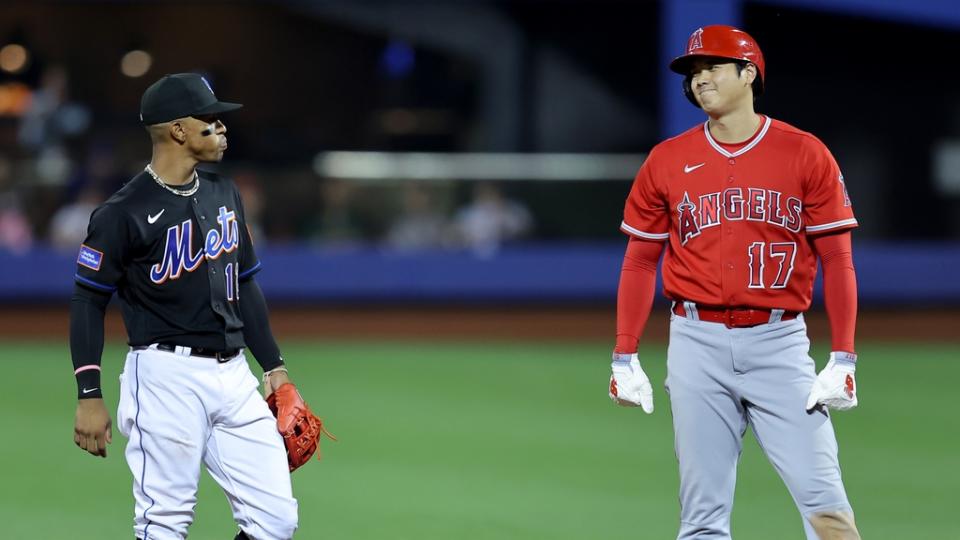
"I can’t even imagine what the payroll would be in that case, since they’re still paying off the (Max) Scherzer and (Justin) Verlander contracts, but Cohen is obviously willing to do whatever it takes. I don’t know if Bellinger would have quite the same effect, but he’d impact their offense enormously as well."
Much of the speculation about Bellinger has been how much he’d help the Yankees, but he’d be perfect for the Mets as well: a high-average hitter with enough power -- 25 doubles, 25 home runs -- that he currently has a higher slugging percentage than Pete Alonso.
In addition, Bellinger’s versatility as a center fielder as well as a first baseman would allow the Mets to move Brandon Nimmo to a corner spot at times and DH Alonso on some days. At age 28, he’s a year younger than Ohtani.
"If you can’t get either one of those guys," said a team exec, "then you probably slow-play it going into next season, give your young guys and your prospects more time to define themselves, and see what your team looks like as you approach the trade deadline. Or you wait for (Juan) Soto (a free agent after next season)."
Whatever the Mets do externally, their new president of baseball operations, David Stearns, has a lot to evaluate internally about the state of the offense, with much of the decision-making revolving around their four rookies -- Francisco Alvarez, Brett Baty, Ronny Mauricio, and Mark Vientos -- as well as surprise slugger DJ Stewart.
Here are some thoughts on each, based on the observations of evaluators, including SNY pre- and post-game analyst Todd Zeile, who probably has seen more of them as Mets than anybody.
Alvarez
His bat has come to life again in September, but his second-half slump was pronounced enough to raise questions about his ability to adjust at the major league level. Scouts are still high on him, mostly because of the power that has produced 23 home runs in 390 plate appearances.
And Zeile, who came to the big leagues as a catcher with the Cardinals before eventually moving to third base, thinks the grind of catching in the big leagues for the first time has taken a toll -- perhaps more so mentally than physically.
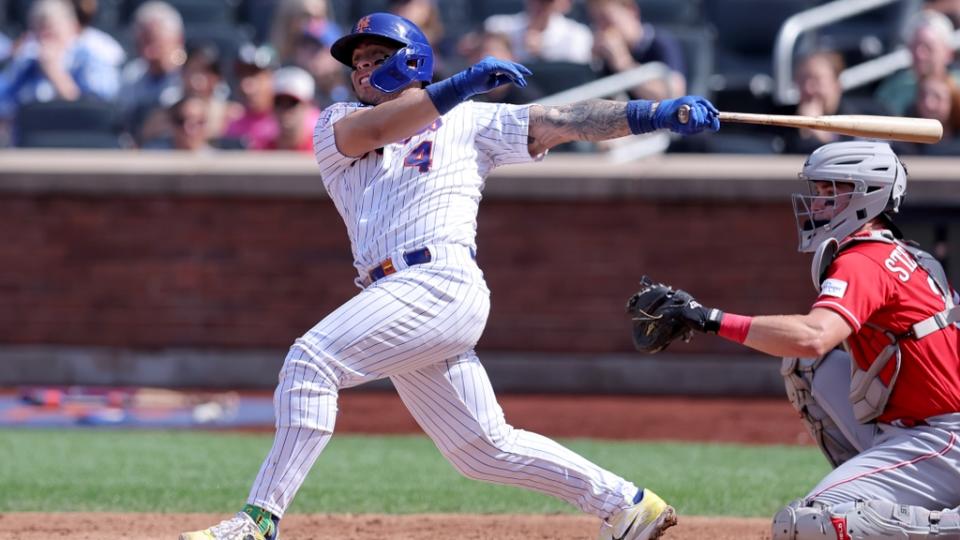
"He’s caught about 100 games but that’s more like 200 for him because of the intensity and everything he’s had to do to prepare," Zeile said. "It’s different at this level. I remember going through that. You get tired and that bat starts to feel like a lead pipe. I think that’s why he was pulling off the ball for a while, cheating a little bit to get to the fastball. He’ll be OK. He’s the real thing."
Baty
The Mets were hoping that Baty would establish himself as the long-term answer at third base, but it hasn’t happened. He’s hitting .212 with seven homers and a .596 OPS for the season, only .146 since the All-Star break, and .177 with no extra-base hits in the 11 games since returning from his Triple-A demotion.
"I’m kind of shocked," one scout said. "I thought he’d hit, based on what I saw in the minors. A lot of people did. But big league pitchers found a hole in his swing: he’s had a lot of trouble handling breaking stuff down and in from right-handers, and he hasn’t been able to make the adjustment."
Zeile recently did a video breakdown on SNY examining that flaw, showing how Baty’s swing is atypical of most lefties who feast on down-and-in pitches, because he pulls his bat handle through the strike zone ahead of the bat head, which makes him a good opposite-field hitter but causes the bat to "drag through the strike zone" and makes it hard for him to get to down-and-in sliders and even fastballs at times.
"Somebody’s going to have to work with him to cover up that hole," Zeile said.
Mauricio
The Mets waited a long time to call him up because they were worried about how much he’d chase big league pitching. But so far, Mauricio has adapted nicely, making a lot of hard contact while hitting .313 in 13 games, albeit with 12 strikeouts.
Also, he has looked more comfortable at second base than scouts were saying he did in the minors after moving from his natural shortstop position.
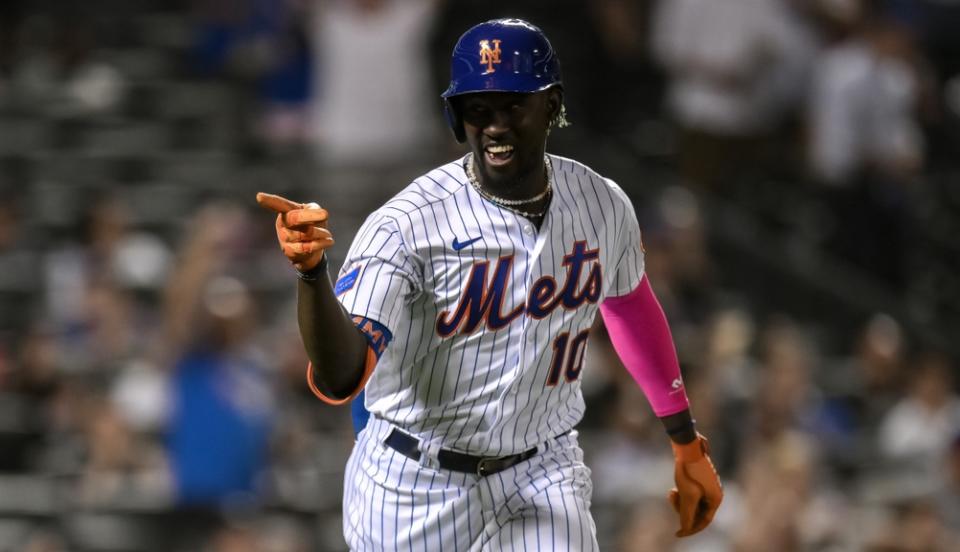
"What I notice is he looks very confident at this level," one scout said. "You knew he had the tools. Some guys just look like they belong in the big leagues. Pitchers will find ways to attack him, and you need to see if he makes adjustments, but so far there’s a lot to like."
"I’m excited by what I see with him," added Zeile.
The question is where he’ll play. If he stays at second, the Mets could move Jeff McNeil to the outfield. But if Baty’s struggles convince them Mauricio helps more at third base, where he played Friday and Saturday, McNeil can stay at second.
Vientos
With more regular playing time lately Vientos has had some success, hitting .300 over his past 14 games, with three home runs, raising his season average to .218.
But even during that period, he has 16 strikeouts. And for the season his strikeout to walk ratio is a troubling 58/8.
When Vientos does make contact, though, he hits the ball consistently hard, to the point where his hard-hit rate (52.2 percent) and average exit velocity (95.3 mph) rank above the 90th percentile for all major league hitters this season.
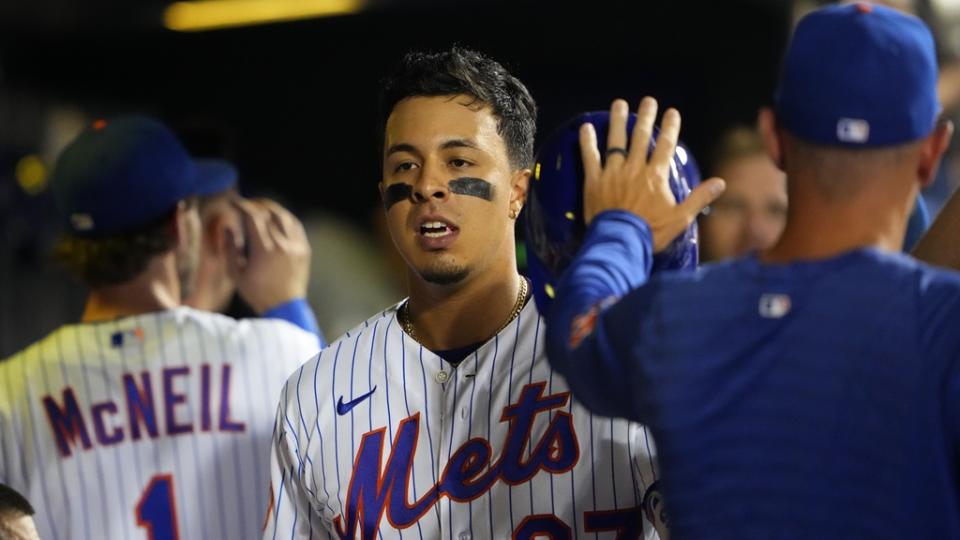
"If he can make more contact, he has a chance to be an impactful big league hitter," said one scout. "But he’s got a long swing and he’s looked overmatched enough that it’s hard to say if he’s going to get there."
Vientos’ defense isn’t good enough for him to play regularly at third base, but he could be an option at DH next season, depending what the Mets do to upgrade there.
Stewart
The 29-year old journeyman has put on a show since he began playing regularly last month, with 10 of his 11 home runs coming since Aug. 15, to go with his .923 OPS in 150 plate appearances for the season.
Is it a fluky hot streak or could he be an asset next season in right field, especially if Starling Marte doesn’t rebound?
Zeile recently did a video breakdown showing how Stewart’s change to a toe-tap, as opposed to a leg kick, has allowed him to be see the ball longer and "feel quick with the bat," as he put it.
"He was a first round pick (in 2015 by the Orioles) so the talent is there," said Zeile. "I think he could have an impact."
In addition to this group, the Mets have several potential impact hitters in the minors, thanks partly to the prospects they received for Verlander, Scherzer, and David Robertson.
But none of them are expected to start next season in Queens, which again raises the question of how Mets should proceed in 2024.
The consensus of the evaluators I spoke with makes it simple: Acquiring either Ohtani or Bellinger would change the equation, from proceeding with patience to going all-in.

